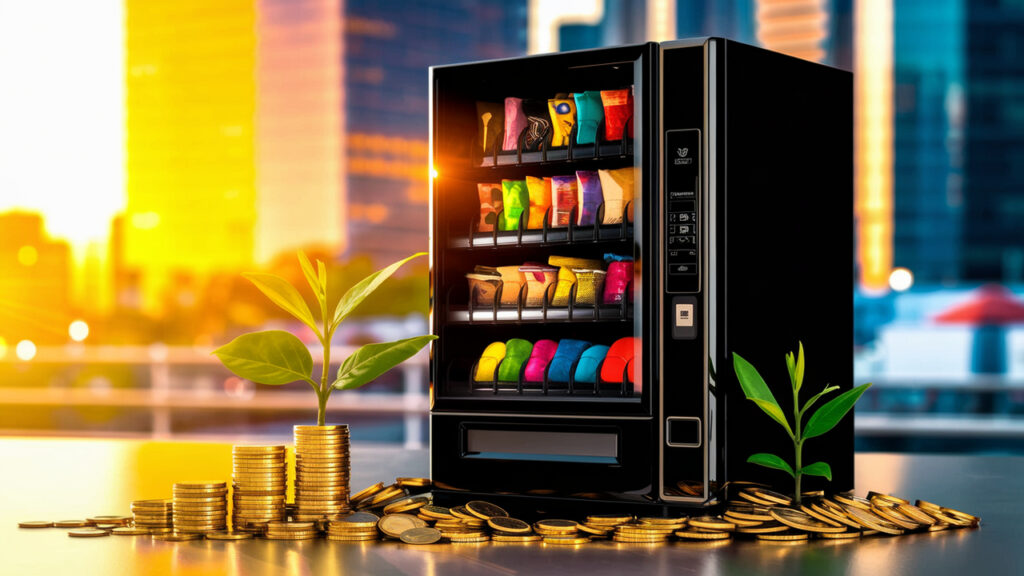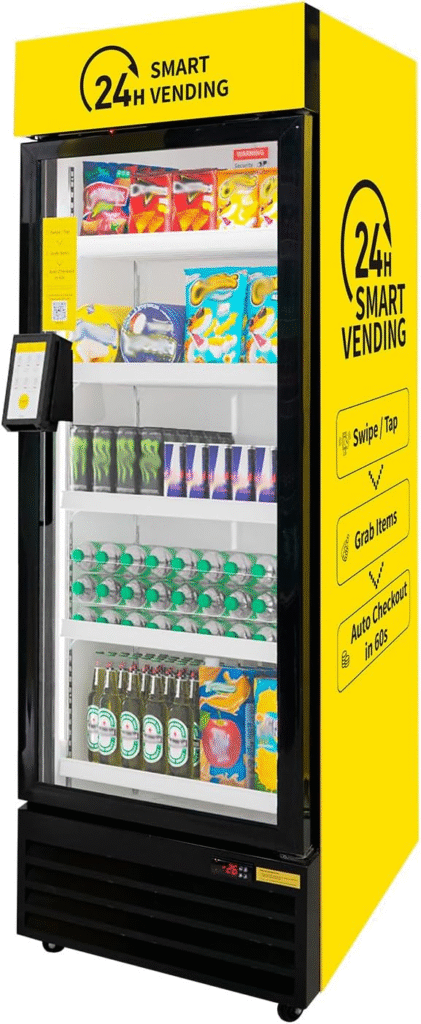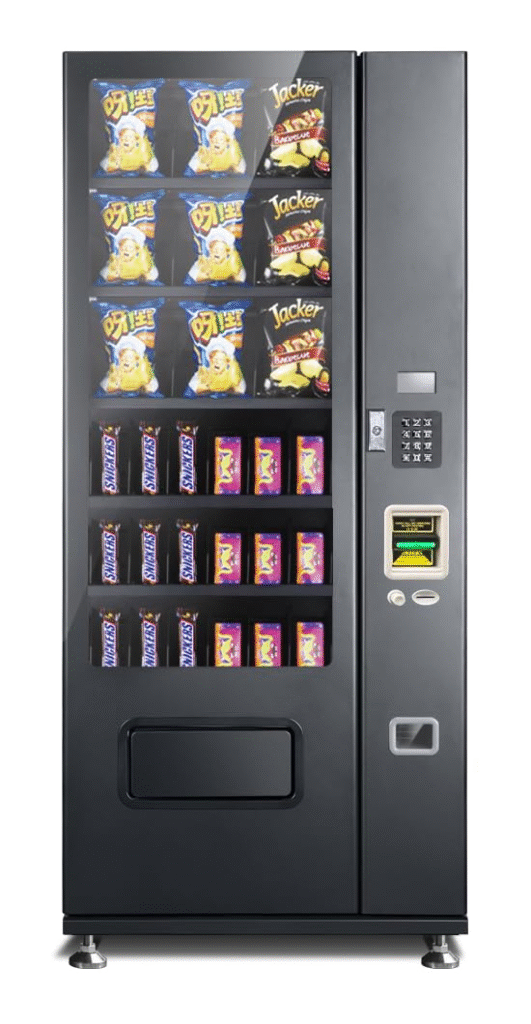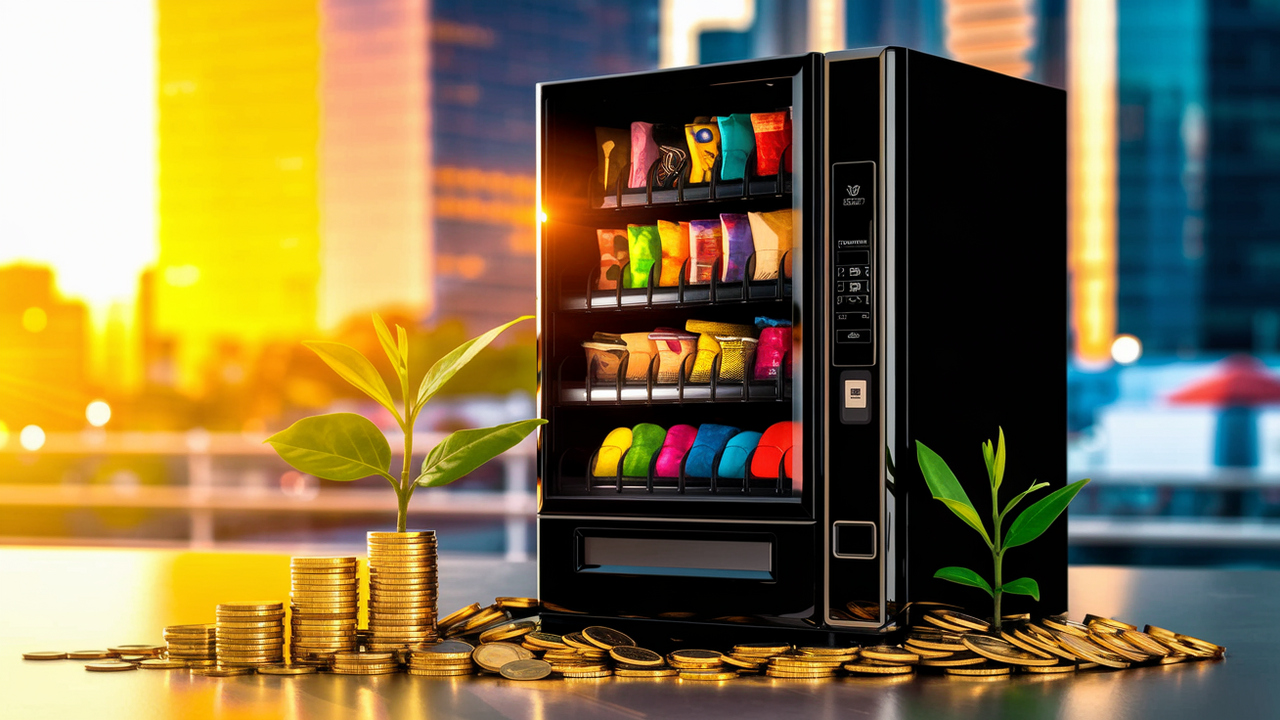Are Vending Machines a Good Investment in 2025?
If you’re asking yourself, “Are vending machines still profitable in 2025?” — you’re not alone. With new payment tech, smarter machines, and flexible placement options, vending has become one of the most affordable passive income streams for both side hustlers and full-time entrepreneurs.
I’ve personally run vending machines in gyms, apartment buildings, and coworking spaces—and let me tell you: with the right setup, vending machines absolutely can be a good investment in 2025. But it all depends on location, machine quality, inventory, and effort.

Table of Contents
1. Why Vending Still Works in 2025
Let’s start with this: People love convenience. Whether it’s snacks, cold drinks, or coffee, vending machines provide immediate access without needing staff or long lines. With more people back in offices, more foot traffic in public spaces, and continued demand for on-the-go options, the vending model still thrives.

In fact, newer vending machines now accept contactless payments, mobile wallets, and even offer remote inventory tracking. These upgrades make the business smarter, easier, and more scalable than ever before.
2. The Profit Margins Are Still Strong
Most vending items (chips, candy, soda) offer margins of 50%–100%. That means if you buy a bottle of soda for $0.70 and sell it for $1.50, you’re earning $0.80 per sale. Multiply that by 100–300 transactions per month (which is average in a good location), and your cash flow adds up fast.

I’ve seen individual machines bring in $300 to $800 per month consistently in high-traffic areas. That means your machine can pay itself off in a matter of months.
3. Startup Costs Are Low Compared to Other Businesses
With vending machines, you don’t need a storefront, employees, or expensive marketing. You just need:
- A quality machine (starting around $1,000–$3,000)
- A reliable supplier or bulk snack source
- A location agreement
- Basic tools and tracking system
That’s it. Compared to restaurants or franchises, the barrier to entry is low. You can even start with one machine and grow.
4. Passive (But Not Effortless) Income
Let’s be real—vending isn’t completely hands-off, but it’s close. Once you place your machine, you’ll just need to:
- Restock weekly or biweekly
- Collect cash or check digital sales
- Wipe it down and clean up
- Adjust inventory based on what’s selling
The more you automate (especially with smart machines), the less time it takes. I spend about 30 minutes a week per machine.
5. Technology Is On Your Side in 2025
Modern vending machines are smarter than ever. Many come with:
- Remote inventory monitoring
- Dynamic pricing tools
- Cashless and touchless payment systems
- Temperature-controlled sections for snacks & drinks
This means you can track performance, change prices, and manage inventory all from your phone or computer.
6. Risks to Consider Before Investing
Like any business, vending isn’t risk-free. You need to watch out for:
- Poor locations (low foot traffic = low income)
- Vandalism or theft (especially in public spaces)
- Machine malfunctions if you buy cheap units
- Spoiled or expired inventory if you don’t monitor turnover
But with smart planning and the right placements, these risks can be avoided or minimized.
7. Who Should Invest in Vending Machines?
Vending machines are great for:
- Side hustlers looking for passive income
- Small business owners with access to buildings or local partnerships
- Real estate investors wanting extra cash flow in rental properties
- Teachers or parents starting with candy machines at schools
Basically, if you want low-overhead, semi-passive income, vending might be the move.
Are Vending Machines Worth It in 2025?
✅ Yes — if you do it right.
Vending machines remain one of the most accessible, scalable, and profitable business models in 2025. They’re low-maintenance, tech-friendly, and can be started with minimal investment.
But like any business, success depends on your effort, planning, and ability to pick the right locations and machines.
If you want help choosing your first machine, I’ve listed my top picks over $1,000 on Amazon here.
One of the biggest reasons vending machines stay relevant in 2025 is because they serve a wide range of industries. I’ve seen vending machines in hospitals, apartment complexes, salons, laundromats, schools, airports—you name it. This kind of placement flexibility makes vending machines one of the few investments that adapt to virtually any niche.
If you’re in a city or densely populated area, the opportunity is even stronger. Urban environments have tons of untapped spots that are perfect for vending—especially micro-offices, gyms, and student housing. A well-placed vending machine in a high-traffic zone can outperform a full-time job with less than 5 hours of work per week.
Many vending machine investors are now turning to specialized vending, like machines that sell electronics, PPE gear, or beauty products. These niche machines often generate higher profits per item and can stand out from traditional snack-and-soda units. In 2025, thinking outside the box gives you a competitive edge.
Another smart angle is branding your machine. Adding a business name, custom decals, or even a QR code to your website or social page can turn your vending machine into a silent marketer. I’ve even seen creators on TikTok and Instagram use their machines as content, gaining followers and growing an audience.
If you’re worried about competition, here’s some relief: most vending machine owners don’t optimize. They set up once and forget it. But if you keep your machine clean, stocked, and priced smartly, you’ll easily outperform nearby machines. Success in vending comes from consistency, not complexity.
Some owners worry about theft or vandalism, but most modern machines come with reinforced doors, lockable coin boxes, and alarm sensors. And if you’re placing your machine inside private businesses like salons or schools, the risk is almost zero.
You can also negotiate profit-sharing agreements with the location owners. Offer 10–15% of profits to keep your machine in a prime spot. It keeps them happy, builds loyalty, and can help you expand to multiple locations just by word of mouth.
Maintenance is surprisingly easy once you get into a rhythm. Most machines just need occasional cleaning, refilling, and maybe a coin jam fix here and there. If you buy a solid machine from Amazon with good reviews, you’ll spend very little time on upkeep—especially with modern card readers that reduce cash-related issues.
Finally, vending machines can be a great way to teach entrepreneurship to teens or college students. I’ve met parents who buy one vending machine and run it with their kids as a weekend project. It builds responsibility, math skills, and shows them how to earn income without punching a clock.

